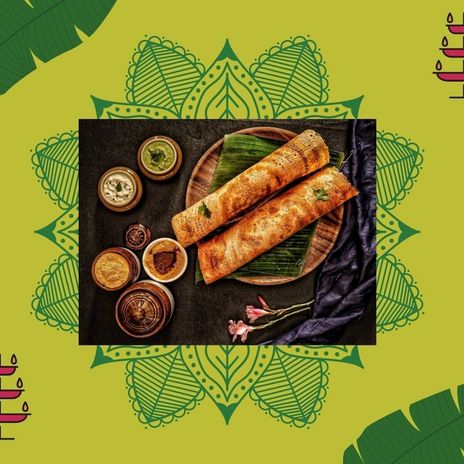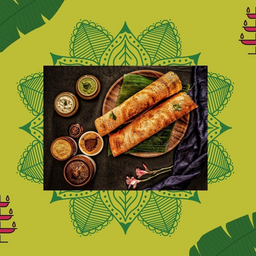Edited by: Maya M. Haidar
Recently, I found myself reading Manu S Pillai’s Ivory Throne. The book details the chronicles of the royal family of Tranvencore (southern Kerala). I was fascinated by it because it recounts tales and historical events I never learned about in school or college. It got me thinking about how much I didn’t know and I soon found myself in a rabbit hole of Kerala’s history and Malayali culture, a lot of which (surprisingly) I had no idea about. Honestly, I blame the education system, because they thought it was more important that I learn about someone else’s culture than my own. I wondered, despite being a Malayali myself, I didn’t know so much—imagine the kind of misconception other people might hold!
I’m no historian, however, one thing I do know A LOT about is food. And I know for a fact that people elsewhere in India don’t know anything about the cuisine of Kerala. I remember last year, I was hanging out with a large group of people, most of them North Indians, and we were playing one of those question-answer card games. The name escapes me; one person draws a card with a question, and everyone else has to answer that question about the person who drew the card. It was my turn to draw a card, and the question was “If I was a flavour of ice-cream, what would I be?”. Someone answered “curd rice with a dosa cone” (insert sitcom laugh track here). I was a little offended, but mostly surprised that there were people who think the entirety of South India (or “Madras” according to certain people) eats just curd rice and dosa. Food, especially food from home is my primary source of happiness, so here’s a description of some of my favourite food from home, to both inform people that we have more than just idli-sambar, and as a tribute to the food themselves.
Puttu
What better way to start than with the breakfast food so divine that the band Thakara wrote a song about it? Puttu is a simple dish, only four ingredients: rice flour, water, salt and grated coconut. I believe it’s the simplicity of it that goes a long way. The damp flour is steamed in cylindrical tubes (that vaguely resemble bamboo), and topped with coconut. If prepared right, it should be soft, slightly moist and crumbly. Its versatility is what makes it a personal favourite of mine. If you wake up feeling hormonal and irritated, you can have puttu with lots of sugar and bananas to make your brain pump up dopamine. On the contrary, if you wake up feeling more relaxed and happy, you can opt for the classic combination of puttu-kadala curry, a spicy curry made from black chickpeas to further boost your serotonin. If you want more texture to your breakfast, you can crush a freshly fried Kerala pappadum into your puttu—in either the sweet or savoury version. I’ve heard of several more adventurous things you could eat with puttu, including but not limited to fish curry, eggs, and sambar. However, I am not brave enough to venture into these dark territories, so I’ll leave it at the two options above.
Puttu is something that unites Kerala; even through differences in class, caste, and religion, you’re sure to find this in almost every household at least once a week. As (a rough translation of) the Thakara song I mentioned before goes, “Why do we need wealth and prosperity when we have puttu?”
Biriyani
I hear you, I hear you all say “This isn’t malayali at all, this is found everywhere”. Well, I would say technically, even though India has a bazillion kinds of biryanis, they’re all so vastly different that they might as well be different dishes. Our pride, our joy, the famous Thalassery biriyani is no exception. Named after the town of Thalassery in Kannur, this biriyani is objectively the best out of all the varieties you’d encounter elsewhere. It’s light on masala, but goes bonkers when it comes to fragrant spices like cardamom and cloves. It’s garnished with mint leaves, roasted cashews, and raisins to complement all the strong flavours. And if you go to a restaurant and order this biriyani and it doesn’t come with a hard boiled egg and lemon pickle, my friend, you’ve been bamboozled. Personally, the tastiest, most flavourful biryani I’ve had is the Thalassery biryani made by my mom (she says the secret ingredient is love but I’m pretty sure it’s the extra caramelized onions she adds). I am very attached to it; so much that the first time I had a biryani in Delhi, I was positively horrified. Where are the raisins and cashews? Where’s the egg? Come on Delhi, you can do better.
Appam
Imagine a perfect pancake; it’s crispy on the edges, soft and fluffy in the middle and delicious. Now, imagine it’s made of fermented rice batter. I promise it tastes way better than it sounds. Appam is made in an oddly shaped pan, which looks like a small shallow wok. The pan is designed only to make appams—although sometimes my mom experiments and tries to use other types of batters in it. The process of making it is fun to watch. You pour a ladleful of the batter into the centre of the wok-type-thing (we call it the appachatti), then you hold it by the handles on the side, and swirl it around, and let the physics do the work of getting it into a perfect circle. Again, just like puttu, this can also be served sweet or savoury, the former being made with milk and sugar, and the latter with pretty much any curry you can think of. The most popular curry, and my favourite, is with stew (or if you want to be precise with the nomenclature, ishtu). Now, don’t confuse stew with the European stew. This one is made of potatoes and onions stewed in coconut milk (rice, coconut, I’m starting to see a pattern here). If you’re feeling fancy, you can crack an egg in the centre of the appam, let it cook sunny side up and you’ll get a whole nutritious breakfast in three minutes.
Porotta and Beef
Of course, I saved the best for the last (I promise this one doesn’t have rice in it, okay!). The food that is subjected to so many controversies, and quite possibly one of the only foods on the planet with such a dedicated cult of followers, including myself. Ask any malayali, they’ll tell you the clichéd phrase that for us, porotta and beef is not just food, it’s an emotion. As cheesy as that sounds, I would have to agree.
Porotta is a layered flatbread made with refined flour. It’s crispy and flaky on the outside and slightly chewy when you bite into it. If they’re hot, I could probably down a couple without any accompaniment. While it’s served with all kinds of curries, and in various forms, the most popular and my favourite is with beef roast.
Beef roast is a delicacy. Prepared painfully with lots of shallots, masalas and coconut pieces, it is a beauty to just look at. I cannot wait for the day I can go to a restaurant again and order porotta and beef roast. You see the waiter walk towards you with your food, and set it infront of you. You tear off a piece from the fresh porotta, dip it into the beef roast while also picking up a piece of meat with it, putting it in your mouth, and having to take a second and lean back in your chair to relish the taste. The thought of this brings me so much unadulterated joy that it’s kept me going through this quarantine season.
Now you know how amazing our food can be; and all states in south India have their own specialities, their own comfort food. We do, in fact, have much much more to eat than the sad idlis you see sitting in Ashoka’s mess. Hopefully I have also succeeded in making you crave some food from God’s Own Country, where we put coconut on everything and call it a day.



